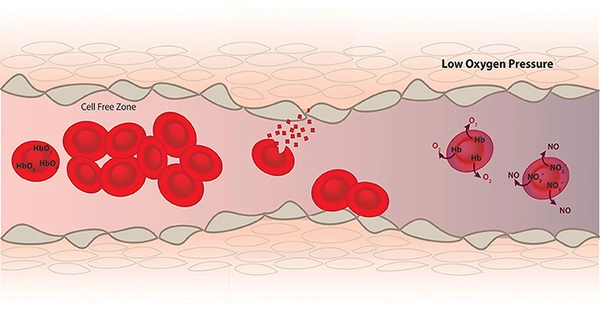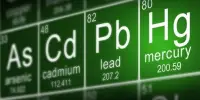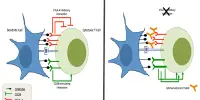Red blood cells (RBCs) are responsible for carrying oxygen from the lungs to various tissues and organs throughout the body. When tissues, including the heart muscle, are subjected to oxygen shortage (hypoxia), numerous physiological reactions can occur in order to increase oxygen delivery while limiting damage.
According to a new KI study published in the Journal of Clinical Investigation, red blood cells exposed to oxygen shortage protect against myocardial infarction. The study also found that a nitrate-rich vegetable diet boosts the protective impact.
Red blood cells transport oxygen from the lungs to all cells in the body and carbon dioxide back to the lungs. A recent study undertaken at Karolinska Institutet in partnership with Karolinska University Hospital demonstrates that red blood cells have an innate function of shielding the heart against myocardial infarction-induced cardiac harm.
A diet rich in nitrate-rich plants, such as arugula and other green leafy vegetables, enhances the effect.
The findings show that red blood cells protect the heart from injury in the event of low oxygen levels, as well as how that protection can be improved with simple dietary changes. This could be very important for patients at risk of myocardial infarction.
Jiangning Yang
“This effect was also shown in a clinical study in patients with high blood pressure who were randomly assigned to eat nitrate-rich vegetables or a diet low in nitrates,” says John Pernow, Professor of Cardiology at the Department of Medicine, Karolinska Institutet in Solna and senior physician at Karolinska University Hospital, and the study’s corresponding author together with Jon Lundberg, professor at the Department of Physiology and Pharmacology, Karolinska Institutet.
Experiments with mouse red blood cells that were injected to a myocardial infarction model with mouse hearts were part of the study. The red blood cells were subjected to low oxygen pressure before to the experiment, and nitrate was added to the drinking water.
Red blood cells were taken from patients with high blood pressure who were randomly assigned to a nitrate-rich diet with green leafy vegetables or a diet with nitrate-poor vegetables in clinical research. These red blood cells were administered to a rat heart-based myocardial infarction model.

“The findings show that red blood cells protect the heart from injury in the event of low oxygen levels, as well as how that protection can be improved with simple dietary changes. This could be very important for patients at risk of myocardial infarction,” says Jiangning Yang, a researcher at Karolinska Institutet’s Department of Medicine in Solna.
The next stage in the research is to create more medications that can trigger the protective signaling mechanism in red blood cells to safeguard the body’s tissues and cells in the case of an oxygen shortage.
“In addition, we need to map how the blood cells transmit their protective signal to the heart muscle cells,” according to John Pernow.
Researchers from Karolinska Institutet, Karolinska University Hospital, Tohoku University in Japan, Heinrich-Heine-Universität in Germany, and Ruhr-Universität Bochum in Germany collaborated on the study.
The Swedish Heart-Lung Foundation, the Swedish Research Council, and Region Stockholm’s ALF project money supported the study. Jon Lundberg and Eddie Weitzberg have patents on inorganic nitrate therapy. Other researchers state that they have no conflicts of interest.
















